Tuva Red Army men. From the creation of the Arat army to the fronts of the Great Patriotic
In the first half of the twentieth century, there were several state entities in the region that were not recognized by most countries as independent and were under strong external political influence from either Russia (later the Soviet Union) or Japan. The very emergence of these states was a consequence of the weakening of the Qing Empire and its subsequent collapse in the Xinhai Revolution process. A weakened China, to certain territories of which, even before the fall of the imperial dynasty, the European powers, Japan and Russia, were interested, could not keep control of a whole number of peripheral regions, and its neighbors safely took advantage of it.
Uryanhay region. The road to independence
Today, the Tyva Republic is a subject of the Russian Federation. By the way, the native region of the current Minister of Defense of Russia and the long-term Minister of Emergency Situations, Army General Sergei Shoigu. A little more than a century ago, Tuva was part of the Qing Empire and was called Tannu-Uryanhai. The country of unique nature, inhabited by Turkic Tuvinians, was a distant periphery of Manchu China. The Chinese Chamber of External Relations was in charge of its political issues, but it practically did not interfere in the internal affairs of the region and the Tuvans' way of life remained archaic. Representatives of the local feudal aristocracy, the noyons, had real power here. The situation began to change rapidly after the Xinhai Revolution. Noyons reaction to the overthrow of the Manchu dynasty was an attempt to change the patrons. Among the Tuvan nobility, both pro-Chinese and pro-Mongolian and pro-Russian sentiments were strong. Mongolia, which fought for independence, became an example for Tuvans during these years, but many representatives of the Tuvan elite did not want to be part of the Mongolian state. Ultimately, the pro-Russian sentiments triumphed. In search of a new overlord, the noons of Kombu-Dorzhu, Chamzy Kamby-Lama, Buyan-Badirgi and others appealed to Emperor Nicholas II to establish a protectorate of the Russian Empire over Uryanghay.
For two years, the tsarist government pondered the proposals of the Tuva nobility, until 4 on April 1914. Emperor Nicholas II did not agree with the proposal for a protectorate over the Uryankhay region. The territory was included in the Yenisei province; the Irkutsk governor-general was given political and administrative powers to govern the region. The Russian authorities have carried out a number of positive reforms. Firstly, the duties that were imposed on the authorities of Ching China were abolished. Secondly, the tax system of the arat households was streamlined. Finally, the Russian government guaranteed the safety of the rights of Tuvinian noyons and the status of Buddhism as the national religion of Tuvans. At the same time, the Russian authorities did not interfere in the administration of national rituals, and the Tuvinian population was exempted from military service, unlike many other peoples of the Russian Empire. In 1914, the city of Belotsarsk was founded, which became the center of the region (it is now called Kyzyl and is the capital of the Tyva Republic).
However, as part of the Russian Empire, Tuva stayed for a very short time - three years after the establishment of a protectorate over the Uryanhai region, the Romanov dynasty fell. The cardinal political and social transformations taking place in the life of the Russian state swept Tuva. Naturally, the initiators of the revolutionary events in the territory of the Uryankhay region became local Russian settlers. The indigenous population, even his elite, had only a vague idea of the revolution, the ideology of the main Russian political parties and the political landscape in Russia. However, local Russians, among whom were workers and engineers and technicians, were able to exert some influence on the worldview of Tuvan noions.
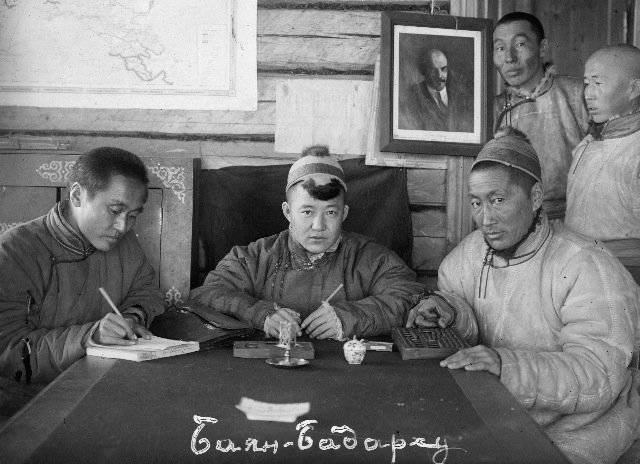
11 June 1918, the 5th congress of the Russian population of the Uryanhai region opened, and two days later, on June 13, representatives of the Tuvan population gathered at the congress. The main issue that was discussed by the Russian and Tuvinian population was the further self-determination of the Uryanhai region. The Regional Council of Deputies was formed under the chairmanship of S.K. Bespalov, and then - MM Terentyev. 18 June 1918, according to the results of the congress, the Treaty on Self-Determination of Tuva, friendship and mutual assistance of the Russian and Tuvinian peoples was signed. However, during the year, from July 7 1918 to June 14 1919, the Uryanhai region was under the control of Admiral A.V. Kolchak’s troops. It should be noted here that the Kolchak government sought to enlist the support of Tuvans, and therefore strongly emphasized that with its power the traditional way of life of the Tuvan population, the power of local nobility and the authority of Buddhist lamas and local shamans would be preserved. It was supposed to provide the Uryankhay region with considerable internal autonomy. After the troops of the Badzheisk Soviet Republic, commanded by A. Kravchenko and P. Schetinkin, retreated to the territory of the Uryankhaysky region, they were able to take control of the Tuva lands and 18 July 1919 occupied the then capital of the region, Belotsarsk.
However, in the territory of the region to continue fighting - both with the remnants of the "white", and with Chinese and Mongolian troops. The Chinese and the Mongols, using the Russian Civil War, occupied the territory of Tuva, hard robbing the local population and establishing their own rules. Ultimately, in 1920-1921. Red Army units managed to finally clear the territory of modern Tuva from the presence of Chinese and Mongolian troops. However, the Bolshevik leadership did not seek to include the Uryankhay region into Soviet Russia. On the one hand, of course, the Bolsheviks did not want to lose control over this territory, but on the other hand did not want complications in relations with China and Mongolia, since both of these states claimed the territory of Uryanhaya. Therefore, the optimal decision was taken in this situation - to push the Tuvan elite to proclaim political independence and support the declaration of sovereignty of Tuva.
In the summer of 1921, Tuvinian political figures decided to gradually prepare the Uryanhai region to proclaim political independence. This view was supported by the Bolshevik leaders of Eastern Siberia, who sought, thereby, to enlist the support of the Tuvan population. In June, 1921 in Chadan, one of the most important centers of Western Tuva, gathered representatives of the Hemchyk kozhuuns of Daa and Beys. As a result of the meeting, representatives of the Kozhuuns decided to proclaim the political independence of the Uryankhay region. However, it was decided that the final declaration of sovereignty would be adopted by the general congress of Uryanhaya. Representatives of Kozhuuns appealed to the government of Soviet Russia for support of the formulated decision on self-determination of the Uryanhai region. From 13 to 16 in August 1921, in the village of Sug - Bazhy, the Vsetuvinsky constituent hural was held, in which 300 delegates from all kozhuuns of the Uryanhay region participated, most of whom were arats - nomadic and semi-nomadic cattle breeders.
The delegation of Soviet Russia and the Far Eastern Secretariat of the Communist International in Mongolia attended the khural as observers. On the first day of the 13 congress on August 1921, a declaration was adopted on the creation of the first independent state in the territory of the Uryankhaysky region - Tannu-Tuva People's Republic. The declaration adopted by the khural proclaimed independence of the republic in internal affairs and recognition of the patronage of the Russian Soviet Federative Socialist Republic in foreign policy relations. 14 1921 August, it was officially announced the proclamation of political independence of Tannu-Tuva People's Republic and adopted its Constitution. Hem-Beldyr was proclaimed the capital of the republic.
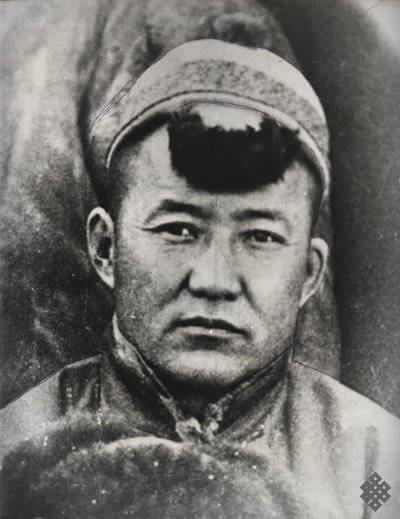 Mongush Buyan-Badyrgy (1892-1932) stood at the origins of Tuvan independence. The son of a simple arata-herd, Buyan-Badyrgy, was adopted by Haydip, a kozhun noon, and was brought up in his family. In 1908, at the age of sixteen, Buyan-Badyrgy inherited from his adoptive father the title of noyon Daa-Kozhuun, becoming, despite his young years, the leader of one of the most populous areas of Tuva. The political situation of those years forced the Tuvinian nobility to balance between the strong neighbors of the Qing and Russian empires. After the Xinhai Revolution, which overthrew the Qing dynasty, Buyan-Badyrgy found himself in the pro-Russian camp of the Tuvan nobility and was among those noyons who signed appeals to Emperor Nicholas II with a request to establish a protectorate of the Russian Empire over the Uryanhai region. However, after the overthrow of the autocracy in Russia Buyan Badyrgy become one of the supporters of independence of Tannu-Tuva People's Republic. It was he who became the developer of the Constitution of the People's Republic of China and the chairman of the Vsetuvinsky National Hural 13-16 in August 1921. He was also elected the first Chairman of the Council of Ministers of the People’s Republic of Tannu-Tuva.
Mongush Buyan-Badyrgy (1892-1932) stood at the origins of Tuvan independence. The son of a simple arata-herd, Buyan-Badyrgy, was adopted by Haydip, a kozhun noon, and was brought up in his family. In 1908, at the age of sixteen, Buyan-Badyrgy inherited from his adoptive father the title of noyon Daa-Kozhuun, becoming, despite his young years, the leader of one of the most populous areas of Tuva. The political situation of those years forced the Tuvinian nobility to balance between the strong neighbors of the Qing and Russian empires. After the Xinhai Revolution, which overthrew the Qing dynasty, Buyan-Badyrgy found himself in the pro-Russian camp of the Tuvan nobility and was among those noyons who signed appeals to Emperor Nicholas II with a request to establish a protectorate of the Russian Empire over the Uryanhai region. However, after the overthrow of the autocracy in Russia Buyan Badyrgy become one of the supporters of independence of Tannu-Tuva People's Republic. It was he who became the developer of the Constitution of the People's Republic of China and the chairman of the Vsetuvinsky National Hural 13-16 in August 1921. He was also elected the first Chairman of the Council of Ministers of the People’s Republic of Tannu-Tuva. However, Buyan-Badyrgy, who played a key role in proclaiming the independence of the republic and establishing Tuvan statehood, was not a supporter of the communist ideology. He practiced Buddhism and was not going to give up religious and traditional values of the Tuvan people, in fact - performed their ardent supporter. In many ways, this contributed to the gradual loss of confidence in Buyan-Badyrgy from the central Soviet leadership, which, with the help of its people in the Tuvan elite, controlled the situation in the formally independent republic. In 1929, the town of Buyan-Badyrgy was arrested and held in prison for about three years, until in 1932 he was shot on charges of counter-revolutionary activities.
How was created Tuva Ararat Red Army
In 1923, Red Army units were withdrawn from the territory of Tuva. However, the foreign policy and domestic political situation required the presence of armed units within the republic that would remain loyal to the people's government and in which case could both suppress unrest among local feudal lords and arats, and protect (at least the first time, before the approach of the Allied Red Army) Tuvan lands from a possible attack by the same Chinese. Since the Tannu-Tuva People's Republic has become an independent state entity, the issue of the formation of its own armed forces has become particularly relevant. The established Military Ministry of the People's Republic of China was headed by Kuular Lopsan.
However, a year later, in 1922, the War Department was dissolved. At the end of 1921 it was formed armed wing messengers (charylga Sherig) under the command of Kyrgys Taktana. Its strength was initially determined by the 10 fighters, and then increased to 25 fighters. The tasks of the detachment included the delivery of messages and decrees of the central government, the protection of public institutions. The detachment was subordinate to the Ministry of War, and then to the Ministry of Justice. In May 1923, the troop strength increased to 30 people, after which it was reassigned to the newly created Ministry of the Interior of the People's Republic of China. From now on, the protection of public order in the territory of Tuva also entered the functions of the detachment. The 15 man from the squadron served as the border guard. At the post of commander of the detachment of Kyrgyz Taktan replaced Oyun Chigsyurun. As ties with Soviet Russia strengthened, military advisers from the Red Army began to be assigned to the detachment. An armed guard of the Russian self-governing labor colony (RSTC) was also created in 1922. In the spring of 1924, the Khemchik uprising, which was antigovernmental in nature, was suppressed by joint actions of the Russian and Tuva detachments, as well as the militia of the pastoralists-arats (by the way, Buyan-Badyrgy was later accused of complicity to this uprising).
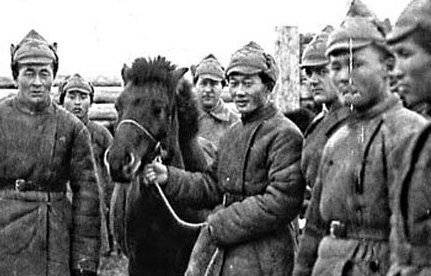 In connection with the Khemchik uprising, the leadership of the TNR seriously thought about creating a more effective defense and security system in the country. Although the rebellion was, in the end suppressed, but there was no guarantee that these disturbances will not be fatal to the new republic. Therefore, it was decided to build the armed forces according to the type of cadre army. 25 September 1924 The Great Khural decided to increase the size of the armed TNR unit to 52 fighters and create 4 separate groups of 3 people each to protect the state border of Tuva. The Great Khural also appealed to the government of the Soviet Union to send a Red Army unit to the territory of Tannu-Tuva People's Republic for the forceful support of the revolutionary government. At the beginning of 1925, a cavalry squadron of the Red Army was transferred to Kyzyl. In the same 1925, a cavalry squadron of 52 man was formed on the basis of an armed detachment of messengers. The commander of the squadron became Oyun Mandan-ool, the commissioner - Tyulush Bulchun. It was officially announced the creation of the Tuva Arat Red Army (TAKA).
In connection with the Khemchik uprising, the leadership of the TNR seriously thought about creating a more effective defense and security system in the country. Although the rebellion was, in the end suppressed, but there was no guarantee that these disturbances will not be fatal to the new republic. Therefore, it was decided to build the armed forces according to the type of cadre army. 25 September 1924 The Great Khural decided to increase the size of the armed TNR unit to 52 fighters and create 4 separate groups of 3 people each to protect the state border of Tuva. The Great Khural also appealed to the government of the Soviet Union to send a Red Army unit to the territory of Tannu-Tuva People's Republic for the forceful support of the revolutionary government. At the beginning of 1925, a cavalry squadron of the Red Army was transferred to Kyzyl. In the same 1925, a cavalry squadron of 52 man was formed on the basis of an armed detachment of messengers. The commander of the squadron became Oyun Mandan-ool, the commissioner - Tyulush Bulchun. It was officially announced the creation of the Tuva Arat Red Army (TAKA). 24 November 1926 d. IV The Great Khural of the People's Republic of China adopted a new Constitution of the republic, which officially established the creation of the Tuva Arat Red Army. It was decided to recruit TAKA through the annual recruitment of young citizens of Tuva for military service. At the end of 1929, the TAKA Cavalry Division was formed as part of two squadrons with a total of 402 commander and a fighter. Tyulyush Dagbaldai took command of the battalion, Kuzhuget Suren became commissar. The unit was subordinated to the newly created Directorate of State Internal Political Protection of the People's Republic of China (UGVPO). Tyulyush Dagbalday was promoted to head of department, and took command of the cavalry division Kuzhuget Seren.
Strengthening the armed forces of the republic
1929 also includes the further development of the policy of “sovietization” of the Tannu-Tuvinian People’s Republic. Strengthened positions in the leadership of the country members of the Tuva people's revolutionary party. In 1930, five emergency commissars were appointed in Tuva who graduated from the Communist University of Eastern Workers. They embarked on a policy of collectivization of agriculture of the republic, the eradication of traditional customs and religious rites. In two years 24 Buddhist monasteries were destroyed, the number of lamas and shamans was reduced from 4 000 to 740. In 1932, Salchak Toka was elected general secretary of the Tuva People’s Revolutionary Party, who remained in power in the republic for more than forty years - until his death in 1973.
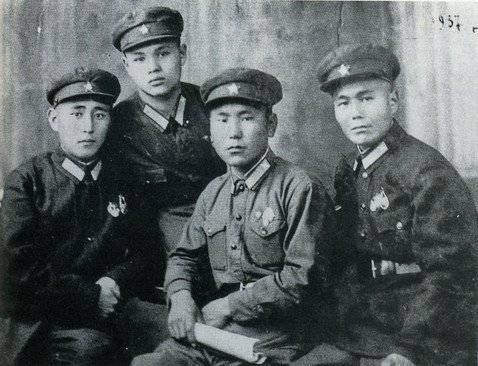 In the 1930 of Tuvan Red Army again took part in the suppression of the rebel gangs in Khemchik kozhuun. 16 March 1930. A cavalry squadron was sent to quell the uprising. Squadron mobilized students of the party school were attached to support. Soon the cavalrymen succeeded in capturing the rebel leader of the local wealthy herder Chamza Kamba. However, the insurgent detachments managed to retreat to the Mongolian border, after which the Mongolian units also rushed to the aid of the Tuva troops in pursuing the insurgents. It is noteworthy that the opponents of the revolutionary government tried to fight with the Tuvan Red Army not only the usual weaponsbut also with the help of traditional rites. As one member of the suppression of the uprising, Semyon Seven, who later became one of the prominent military figures of Tuva and finished serving as a lieutenant colonel in the Soviet Army, recalls, “the tree also had two so-called choluk — sacrifices. The comrades who were there told: on the inflated bladder of the bladder with coal, eyes and ears were drawn, he was put on a pole, to which arms and legs were attached, and dressed in rags. Two such figures were placed by persons in the direction from which we followed the bandits. And this meant that a curse was sent to us, to the Red Army ”(Seven S.Kh. The Truth of My Life // Central Asia. Weekly. No. 48. 3-9 December 2010).
In the 1930 of Tuvan Red Army again took part in the suppression of the rebel gangs in Khemchik kozhuun. 16 March 1930. A cavalry squadron was sent to quell the uprising. Squadron mobilized students of the party school were attached to support. Soon the cavalrymen succeeded in capturing the rebel leader of the local wealthy herder Chamza Kamba. However, the insurgent detachments managed to retreat to the Mongolian border, after which the Mongolian units also rushed to the aid of the Tuva troops in pursuing the insurgents. It is noteworthy that the opponents of the revolutionary government tried to fight with the Tuvan Red Army not only the usual weaponsbut also with the help of traditional rites. As one member of the suppression of the uprising, Semyon Seven, who later became one of the prominent military figures of Tuva and finished serving as a lieutenant colonel in the Soviet Army, recalls, “the tree also had two so-called choluk — sacrifices. The comrades who were there told: on the inflated bladder of the bladder with coal, eyes and ears were drawn, he was put on a pole, to which arms and legs were attached, and dressed in rags. Two such figures were placed by persons in the direction from which we followed the bandits. And this meant that a curse was sent to us, to the Red Army ”(Seven S.Kh. The Truth of My Life // Central Asia. Weekly. No. 48. 3-9 December 2010). In the end, shamanistic rites, as well as local knowledge, did not help the rebels. The rebels retreating to the territory of Mongolia were surrounded by Mongolian troops, captured and, together with their cattle, driven into the territory of Tuva, where they were handed over to the command of the Tuvan cavalry squadron. Thus, neighboring Mongolia, another friend of the Soviet Union and under the enormous influence of the latter Central Asian state, greatly assisted in suppressing the uprising. It is significant that many participants in the uprising were released by the court - then the Tuvinian justice was quite loyal to the participants of such speeches, writing off what was happening to the backwardness of the arats and their finding under the influence of religious prejudices. Meanwhile, participation in the suppression of anti-government protests has been one of the few chances for Tuvan Red get a real combat experience. Unlike Mongolia, Tuva was located far from the same Manchuria and did not directly participate in the clashes with the Japanese and Manchurian troops. As the historian of the Tuva army B. B. Mongush, the key tasks of the Tuva army were to protect the revolutionary government from internal and external enemies and guard the state border, but first of all the Tuvan Red Army had to suppress anti-government demonstrations (Mongush B. B. To the history of the creation of the Tuvinian Revolutionary Army (1921-1944)) / http://web.archive.org/web/20100515022106/http://www.tuvaonline.ru/2010/05/12/0721_armia.html).
The influence of the "Sovietization" policy was also manifested in the armed forces of Tuva. Thus, in 1929, the government of the People's Republic of China decided not to take into service the children of noyons and wealthy arats. The social composition of TAKA was rapidly proletarianized — if in the 1930 the 72% of middle and poor people served in the division, then in the 1933 the number of arats of medium and small income reached 87% in the armed unit. The total number of party members and the Revolutionary Youth Union in the ranks of TAKA reached 61,7% of the unit personnel. At the same time, it was decided to develop a system for training TAKA personnel. In December, 1930 was created at the division a junior commander’s school in which personnel from 20 cadets were trained for six months. The first issue of Tuvinian junior commanders was followed in June 1931. To organize the military and physical training of pre-conscripts, the Society for Assistance to National Defense (CCA) was created - a Tuvinian equivalent of the Soviet OSOAVIAHIM. October 19 X. TUMA 1932 was transferred to a two-tier system of organization - personnel and territorial-militia. In 1934, the cavalry division was transformed into a combined cavalry regiment, and TAKA was renamed into the Tuva People’s Revolutionary Army (TNRA). The cavalry regiment of the TNRA included 2 saber squadrons, a squadron of heavy machine guns and a squadron of the regimental school training junior commanders. In addition, in the 1935, the regiment consisted of artillery, engineer and quartermaster platoons, a communications platoon and a chemical department.
The command structure of the regiment was represented by Tuvans. The commander of the regiment was Hessen Shooma, chief of staff - Michael Kyzyl-ool. The command of the squadron of heavy machine guns was taken by Saaya Balchyr, the regiment's artillery was Oyun Lopsan-Baldan, the communications platoon was Mandarzhap, and the sapper platoon was Saaya Al. Back in 1920, the training of Tuvan commanders began in the educational institutions of the Red Army on the territory of the USSR. The first ten cadets were sent to the Soviet Union at 1925. In November 1935, 20 graduates from the Tambov secondary cavalry school of the RKKA named after. CM. Budyonny. Semyon Seven, excerpts from the memoirs of which are given in the text of the article, was sent to study at the Communist University of Eastern Workers, and from there, from the third year, transferred to 1933 in the Krasin Moscow Artillery School (from the summer of 1034, the school was transferred to Sumy), which he graduated from in 1937, began to accept Tuvan commanders and in the Military Academy. Mv Frunze. In particular, he studied there Oyun Lakpa, who replaced Gessen Shawom as regiment commander. Total for the period from 1925 to 1946. In Soviet higher and secondary military schools, they received training at various levels of 25% of the personnel commanders of the Tuvan armed forces.
By this time, the Tuvinian armed forces, despite the process of gradual improvement of personnel training, remained poorly armed. Recalls Simon Seven, "I was appointed the commander of an artillery platoon of the regiment with a salary 70 rubles. In the Tuva army then there was one armored vehicle, one U-2 aircraft, one gun. The gun was disassembled, no one ever shot from it. First of all, the platoon soldiers collected this gun, trained them, and started shooting from it ”(Seven S.Kh. The Truth of My Life // Asian Center. Weekly. No. 48. 3-9 December 2010).
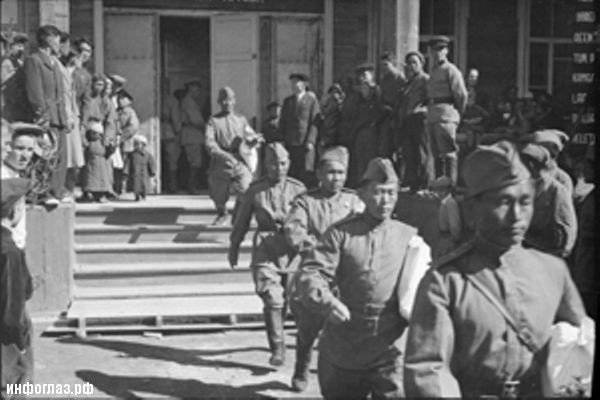
In 1927-1936 The armed forces of the People's Republic of China were subordinate to the Office of State Internal Political Protection (in 1935-1937 - the Internal Office of the Protection of the Country), in 1036-1938. subordinate to the Military Council of the TNR, and in 1938-1940. TNRA was directly subordinate to the government of the republic. End of 1930's was marked by a serious aggravation of the military-political situation in the Far East and Central Asia. In particular, there were clashes of Japanese and Soviet troops. In connection with these events, further measures were taken to improve the training and command system of the armed forces of the People's Republic of China. 22 February 1940 was created by the Ministry of Military Affairs of the People's Republic of China, which was headed by Colonel Hesse Shawom (later he was promoted to the rank of Major General, and in 1943 Hesse Shawom replaced Colonel Mongush Suvak as Minister of Military Affairs).
Tuvans in the Great Patriotic
The Great Patriotic War brought its own touches to the political history of the Tuvan state. The Tuva People’s Republic became the first foreign state to act as an ally of the USSR in the Great Patriotic War - a declaration of support for the Soviet Union was adopted on June 22, 1941 by the Small Khural of the TNR. Three days later, on June 25, 1941, the TNR declared war on Germany. The Soviet Union was transferred a gold reserve of the republic in the amount of 30 million rubles, supplies of horses, fur and wool products, wool, meat of the fighting Red Army began. From June 1941 to October 1944, the TNR supplied the Soviet Union with 50 thousand horses, 70 thousand tons of sheep wool, 12 thousand short fur coats, 15 thousand pairs of boots, 52 thousand pairs of skis, hundreds of tons of meat, carts, sledges, Other products. A few dozen were also purchased. tanks and aircraft transferred to units of the Workers 'and Peasants' Red Army.
Since the TNR was the closest military-political ally of the Soviet Union, the beginning of the Great Patriotic War led to the transition of the armed forces of the TNR to martial law. The number of TNRA was increased compared with the pre-war 489 soldiers and officers to 1136 military personnel. An institute of military commissioners and political leaders was established in the United Cavalry Regiment and its subdivisions. In 1942, the commissars were transformed into deputy commanders for political affairs.
After the Soviet troops began to rapidly gain the upper hand over the Nazi invaders, in 1943 the number of TNRA was reduced to 610 troops. By this time, the cavalry regiment of the Tuva army included 2 saber squadrons, a squadron of the school for training junior commanders of the regiment, a technical squadron, artillery and mortar batteries, a tank, sapper, musical platoons, a communications platoon, aviation link and quartermaster. The TNRA was armed with not only small arms and cold steel, but also mortars, anti-tank grenades, tanks, and even aircraft. All male TNR citizens between the ages of 16 and 50 were required to undergo military training, as a result of which the corresponding Decree of the Presidium of the Small Khural of the TNR was adopted. As for the Soviet citizens living in Tuva (and this was the bulk of the Russian and Russian-speaking population of the country), from the first months of the war it was decided to mobilize all men aged 19-40 years into the Red Army, and the costs of mobilization activities the Tuvan government took over. At the same time, the Tuva People’s Republic began sending volunteers from among its citizens to the Red Army, which was fighting against the Nazi invaders.
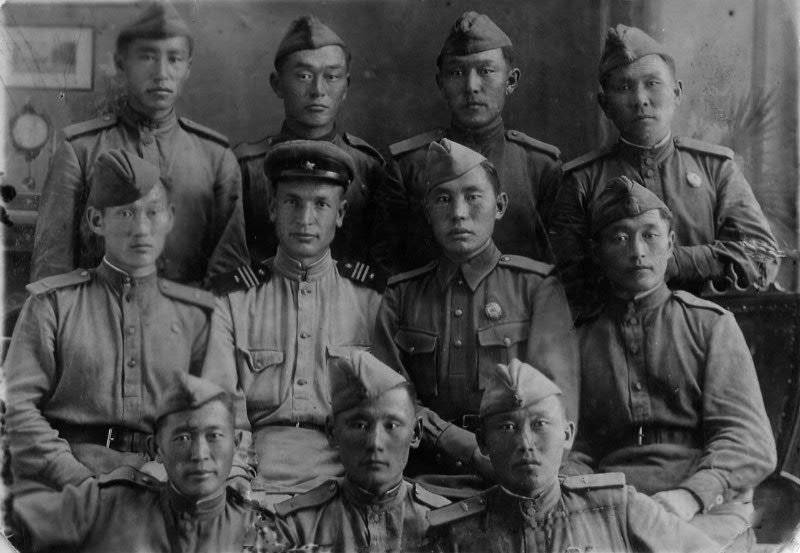
20 of May 1943. 11 volunteers were sent to the Red Army - tankers recruited into the 25 of the Umansk Tank Regiment of the 1 of the Ukrainian Front. 1 September 1943 was sent to the front by the 1 th TNRA Volunteer Squadron commanded by Captain Tyulyush Kecil-ool. The number of the squadron consisted of 206 people - both military personnel Tuvan army and people with no experience of military service. The squadron joined the 31 Guards Cuban-Black Sea Regiment 8 Guards Cavalry Division. The military unit participated in the liberation of 80 settlements, leading battles on the territory of the Ukrainian SSR. Particularly distinguished Tuvan soldiers in battles in Galicia and Volyn, including the capture of Rivne. Among the German occupiers, the Tuvinian volunteers got the nickname “Black Death” - it is obvious that the Germans, first of all, were frightened by the national tradition of the Tuvans not to take anyone into captivity. 1 February 1944 by the Tuvin squadron Kechil-oola made a breakthrough into the station and the brick factory of Rovno, and the Tuvans were able to break through much further than other Red Army units and then, after suppressing the resistance of the enemy, waited for the main units of the Soviet troops to approach.
For the valor displayed in battle, Khomushka Churguy-ool and Tyulyush Kechil-ool received the title of Hero of the Soviet Union, 67 servicemen received Soviet awards, and 135 Tuvan fighters and commanders were awarded Tuvan medals. Cavalry squadron was given the honorary title "Guards Rovno". In total, about 8 thousands of people from the Tuva People's Republic took part in the Great Patriotic War. The retired lieutenant colonel Semyon Khunaevich Seven recalls: “All volunteers fulfilled their duties with honor. Tankman Comrade Churguy-ool became the Hero of the Soviet Union. Not everyone returned home. I will name some of the dead. He died in a heroic battle with the German fascists, comrades Sat Burzek, buried in the Ukrainian city of Dubno. Mongush Sat was killed in the Ukrainian village of Derazhno, Rivne region, Dopechut-ool was buried in the town of Dubno, Rivne region. The tankers Idam, Unuk-ool, Baykar did not return from the front. All ten girls returned from the front. 10 partisans returned, these were people of the older generation, among them was partisan old man Oyun Soktay "(Seven S.Kh. The Truth of My Life // Asian Center. Weekly. No. 49. 10-16 December 2010).
In 1944, it was decided to join the Tuva People’s Republic in the Soviet Union. The TNRA, in accordance with this decision, ceased to exist, and the cavalry regiment was transformed into a separate 7 th cavalry regiment of the Red Banner Siberian Military District. The Ministry of Military Affairs of the People's Republic of China was transformed into a military commissariat of the Tuva Autonomous Region. In 1946, the 7 Cavalry Regiment was abolished. Part of the regiment was part of the 10 th Infantry Division, stationed in Irkutsk, the other part - in the 127 Infantry Division, stationed in Krasnoyarsk. Many servicemen of the Tuva army continued their service either in the USSR armed forces or in the internal affairs bodies of the Tuva autonomous region. In particular, Semyon Seven, demobilized from the post of deputy regiment commander for combat, was appointed head of the economic department of the Internal Affairs Directorate of the Tuva Autonomous Region, and then head of the Tuva DOSAAF. The battle banners of the Tuva armed forces were transferred to Moscow.
Thus ended the nearly twenty-five year history of the armed forces of Tuva - a small, but in its combat-ready and brave army, which made its own contribution to the common cause of the struggle against the Nazi invaders.
Information